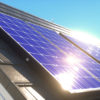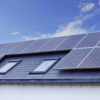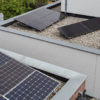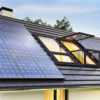Even though solar power is thought of as a means to energy independence, it has heralded an entirely new economics in its wake. Given the way they work, solar panels cannot produce electricity 24/7. They are dead weight during the night and won’t work at peak capacity when it’s cloudy. Also, there will be times when they are producing more power than needed.
The grid can power your home in low or no light conditions. And, the excess electricity produced by them during peak hours can be offloaded to the grid in exchange for a rebate. All this is made possible by a solar meter, which is connected both to your solar panels and the grid.
The solar meter keeps track of how much power your panels produce, how much of it is consumed, how much electricity is bought from the grid and how much is sold to it. Much like solar panels, meters too have come a long way and offer capabilities far beyond what were previously available.
How a Meter Works
All homes tied to the grid have electricity meters installed. Typically, meters are clock-like devices with a rotating dial inside of them. Electricity causes the dial to spin and its speed is used to determine how much you need to pay at the end of the month.
Electricity itself is measured in watts. One watt is equal to one volt times one ampere. A volt is essentially a measurement of the electric potential that drives an electron forward. Ampere on the other hand, measures the number of electrons moving through a circuit. If we substitute electricity in a wire with water in a pipe, then volt will estimate water pressure, and ampere will give us the amount of water flowing through.
Most bills will show your electricity consumption in kilowatt, which is 1,000 watts. However, we also need to add a time component here since all bills are calculated between time periods. This is why electric meters calculate bills in kilowatt hours, or how much electricity was consumed in one hour.
Digital meters on the other hand come in two varieties. The first is essentially an analog meter with an Analog to Digital Converter (ADC) and displays the reading on a digital screen. The second type of digital meter has AC sensors that track electricity usage by continuously monitoring the power flow. AC sensor digital meters are generally speaking much more accurate than their analog counterparts.
Drawbacks of Analog Meters
Meters with rotating dials have served us well for over a century now. But, the technology is old and is failing to keep up with modern requirements. Solar power presents unforeseen challenges analogue meters are not ready for.
Accuracy: The dials in analogue meters can corrode and spin inaccurately, causing fluctuations in readings. As the dials are constantly spinning day in and day out, they begin to loosen up over time.
Toughness: Meters have a lot of small moving parts. The dials in an analog meter are run by a series of gears which can break. This problem is much more common in low quality meters than better ones.
Features: This is where analog meters really begin to fall behind. All an analog meter can do is measure electricity. However, solar power requires advanced analytics that can help home owners make informed decisions on how to manage their power usage. Analog meters are incapable of providing such insights.
Why Digital Meters are a Must if You’re Going Solar
At this point, any solar installation in Australia will require a bi-directional digital meter as part of a government initiative. But, it still helps to know how these meters work and why they are actually better than the older legacy meters.
A regular meter only runs one way, as the electricity is moving from the grid to the house. A solar digital meter on the other hand is a two-way device that can track electricity both coming into and going out of your house. The difference between the two is represented in your electricity bill. This method of bill processing is also called net-metering.
As digital meters are more accurate, you can get a better idea of how much electricity you’re using. Digital bi-directional meters are capable of sending usage data to the utility for billing and analytics as well.
Finally, you can go for smart meters if you really want to get the best out of your solar investment. A smart meter comes with a WiFi router that can connect with your phone. It can also give more detailed information about your electricity usage through an app. Besides knowing your aggregated power usage, a smart meter can also reveal what time of the day you’re using most electricity, and when your solar panels are most productive.
Conclusion
Every solar panel installer will have a list of preferred meters that they will offer to you. But, their choices won’t necessarily be the best or even the most cost-effective. For example, an installer may push a very advanced smart meter on to you even though you have no intention of using its features.
On the other hand, if you do want to get into the minutiae of your electricity usage, then you may want a smart meter. It’s better to discuss options with your installer before moving ahead with an installation project.
Finding the right solar power system for your home can be tough. There are a lot of choices and it’s hard to know who to trust. As Australia’s premier solar search engine, bidmysolar™ can help you find the right solar installer for your home.
Our vetting process ensures you get only the best, most experienced installer. Interested in learning more? Check out our section on how our process works, or contact us for more information. We’d be happy to answer any questions you may have.





